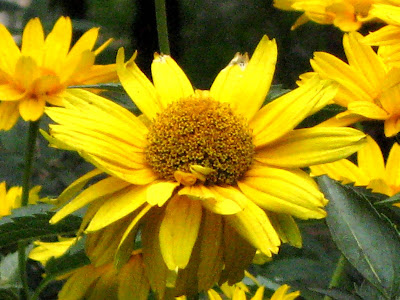The plant can reach a height of 1-2 m. It has alternate, mostly basal leaves 20-75 cm long, covered by coarse hair. It flowers from June to August, with inflorescences measuring 10-15 cm in diameter (up to 30 cm in some cultivars), with yellow ray florets circling a brown, domed center of disc florets.
This article is licensed under the GNU Free Documentation License. It uses material from the Wikipedia article, Rudbeckia hirta SEE FULL License, Credit and Disclaimer
Image License: I, (sookietex) the creator of this work, hereby release it into the public domain. This applies worldwide. In case this is not legally possible, I grant any entity the right to use this work for any purpose, without any conditions, unless such conditions are required by law.
If This image is subject to copyright in your jurisdiction, i (sookietex) the copyright holder have irrevocably released all rights to it, allowing it to be freely reproduced, distributed, transmitted, used, modified, built upon, or otherwise exploited in any way by anyone for any purpose, commercial or non-commercial, with or without attribution of the author, as if in the public domain.














2 comments:
Unfortunately this is HELIANTHUS tuberosus!
Our editors respectfully disagree. The petals of the helianthus tuberosus aka Jerusalem artichoke are narrower and have a more tapered tip and it's leaves are narrower with smooth edging as opposed to the rudbeckia's slightly wider petal with a less tapered tip and leaves that are wider with an edging that resembles a pinking shear cut. Also the ox-eye center is fuller. Enjoyed exchanging ideas with you Dr.Schmitt Thank you for stopping by. Hope you'll visit again.
Post a Comment